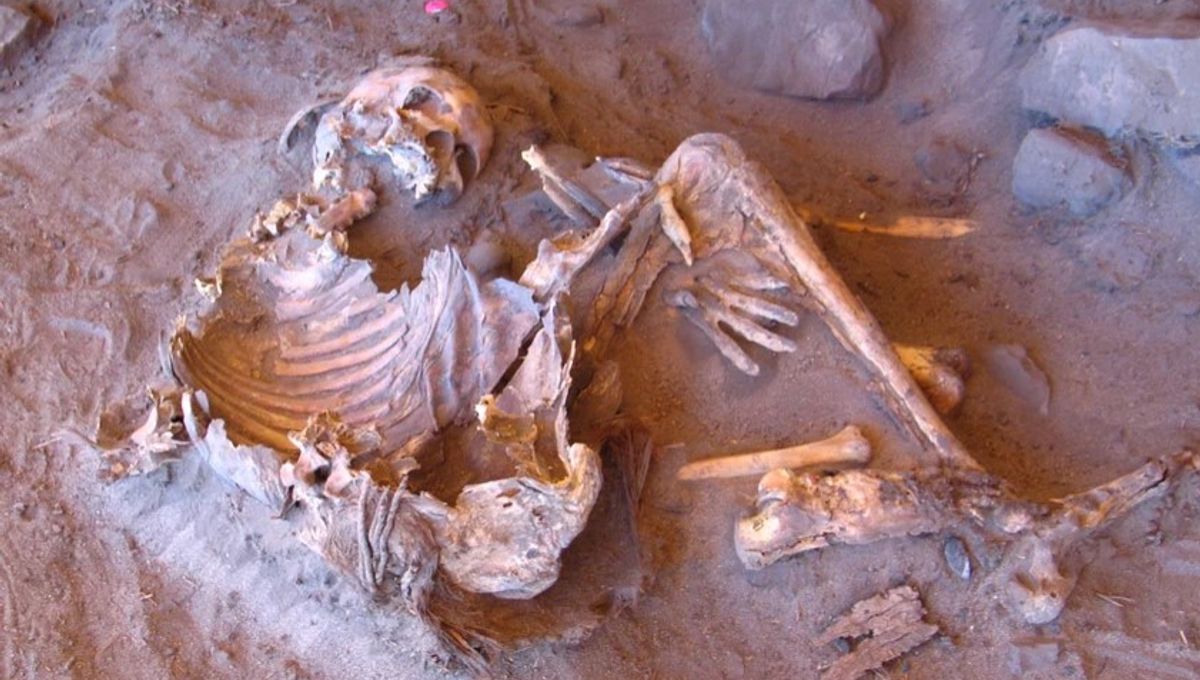
People living in North Africa today can trace their ancestry back to a unique human population that lived in the Sahara at a time when the region was lush, green, and humid. Identifying this prehistoric lineage for the first time in the genomes of two 7,000-year-old mummies, the authors of a new study confirm that the group never mingled with people from sub-Saharan Africa, existing in complete isolation within their verdant oasis.
Today, the Sahara is the largest hot desert on Earth, yet archaeological evidence suggests that people once fished in the region’s rivers, hunted game in its sprawling forests, and herded livestock across vast grasslands. Known as the Green Sahara, this bountiful paradise existed during the so-called African Humid Period, which peaked roughly 11,000 to 5,000 years ago.
During this period, Saharans took up pastoralism, raising cattle that were brought to Africa from southwest Asia. However, because no genomes from the Green Sahara had ever previously been sequenced, researchers were unsure if the adoption of herding occurred as a result of immigration by farmers and shepherds from elsewhere, or simply represented the spread of cultural practices with no accompanying genetic intrusions.
Seeking answers, the study authors sequenced the genomes of two naturally mummified female corpses found at the Takarkori rock shelter in Libya. Comparing these to 795 present-day and 117 ancient genomes from Africa, southwest Asia, and Europe, they discovered that the Takarkori individuals carry no sub-Saharan ancestry, indicating that they belonged to a population that was completely cut off from those living further south.
In contrast, the two mummies shared close genetic links with a group of 15,000-year-old hunter-gatherers that lived in Taforalt Cave in Morocco, prior to the African Humid Period. Like the Takarkori mummies, this Taforalt lineage was found to be completely unrelated to sub-Saharan African populations, all of which suggests that both groups descended from North African ancestors that had no contact with people elsewhere in the continent.
“Our research challenges previous assumptions about North African population history and highlights the existence of a deeply rooted and long-isolated genetic lineage,” said study author Nada Salem in a statement. Based on this discovery, the researchers deduce that, even when dotted with green ecosystems, the Sahara probably contained “ecological barriers” that played a “persistent role in limiting human genetic flow” throughout history.
Taking their research a step further, the authors compared the Takarkori genomes with those belonging to 50,000-year-old humans from Zlatý kůň in the Czech Republic, who represent one of the earliest known populations of Homo sapiens outside of Africa. Results showed that the mummies were more closely related to this lineage than to sub-Saharan Africans.
Recent analyses have indicated that the Zlatý kůň population may have been the first group of modern humans to breed with Neanderthals, before more extensive intermixing occurred later on in our journey across Eurasia. Mirroring this, the Takarkori individuals were found to carry small amounts of Neanderthal DNA, equalling about one-tenth of the quantity present in modern non-African humans.
Such a discovery indicates that while these Green Saharans were related to the very first humans to leave Africa, they didn’t have contact with later populations who carried larger quantities of Neanderthal DNA. This, in turn, reinforces the fact that this North African lineage must have remained completely isolated for many tens of thousands of years.
Thus, the researchers suggest that animal herding wasn’t introduced to the region by immigrants, but probably arose as cattle were distributed through ancient trading networks. “This discovery reveals how pastoralism spread across the Green Sahara, likely through cultural exchange rather than large-scale migration,” says Salem.
Of course, things are quite different in today’s hyper-connected world, which is why this ancient lineage no longer exists in its unadmixed form. However, traces of these Green Saharan ancestors can still be seen in the genomes of modern North Africans, highlighting their unique genetic heritage.
The study is published in the journal Nature.
Source Link: Previously Unknown Human Lineage Lived In The Sahara When It Was Green